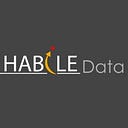Lead Data Enrichment: Top 5 Benefits for B2B Data Selling Companies
Lead data enrichment is one of the core tasks of B2B data aggregators. Businesses need clean, standardized, and accurate prospecting lists enriched with demographic, technographic, chronographic, firmographic, and intent data.
And so, the tasks of data aggregators and sellers include acquiring the data from multiple sources and keeping it updated, cleansed, segmented and enriched. But all of these tasks have their own challenges.
Lead enrichment has multiple facets. And extracting insights from available data and appending relevant information for improved lead scoring is a complex process requiring multiple tools and techniques.
What is lead enrichment?
Lead data enrichment is the process of collecting and adding relevant information to lead profiles so that prospects become easier to segment and target. However, the added information needs to be accurate, updated, cleansed and ready for use in decision-making. So, lead enrichment is not only about gathering data; the additional information also needs to be verified, validated, cleansed, and standardized to be usable.
Types of B2B data enrichment
Internet users leave trails through multiple touch points and their social media and online behavior patterns help enrich lead data comprehensively. Capturing such data opens up a broader range of opportunities to approach prospects at exactly the right time and location in their buyer’s journey.
Some lead enrichment data types include:
- Demographic data: Relates to personal and geographic characteristics like name, address, email, telephone number, employment history, skills, etc.
- Firmographic data: This is based on company information, such as company name, location, industry, number of employees, revenue information, etc.
- Technographic data: This is related to either the technology that an employee uses or the technology that a company uses.
- Chronographic data: Also known as sales triggers, this relates to the events and changes that occur as time progresses. These include company location move, job entry and exit, company funding and acquisitions, IPOs, event appearances, hiring, etc.
- Intent data: This relates to the online behavior of prospects as they surf the internet — what they’re looking for, what content they’re engaging with, and which products or services might interest them.
Why businesses seek enriched prospect profiles
B2B data buyers look for detailed and comprehensive customer information to maximize the results of their efforts. Enriched data that includes minute details on their customers helps them better strategize personalized marketing campaigns and target customers.
Common benefits of data enrichment to businesses include:
- Access to validated and standardized data
- Improved lead score and segmentation
- Fewer email bounces
- Increased right-party contact
- Targeted marketing campaigns
- Higher customer retention
- Higher lead conversion
- Sales acceleration
5 ways lead data enrichment benefits data sellers
There are multiple benefits B2B data aggregators receive from lead enrichment. The top 5 include:
1. Build credibility through a high-performing decay-resistant database
Dirty data is the biggest nightmare for the sales team. With 40% of business persons changing email addresses every two years, 21% of CEOs changing email addresses every year, 60% of job functions changing every year, and much more, keeping B2B data clean and accurate all the time is tough task. And data sellers providing clean and enriched data come to lead the market in goodwill and sales.
2. Higher customer retention and improved customer satisfaction
Investing in techniques and resources to deliver enriched and accurate data results in greater customer satisfaction and retention. The entire revenue stream of a B2B data aggregator depends on data quality and enriched data.
3. Readily usable data with proper standardization and segmentation
Consistent and segmented data is the key to its usability. Once you format your records in a way that creates consistency across the system and segment prospects according to shared characteristics, the data becomes more usable for business clients and gains scalability.
4. Optimized ongoing data maintenance cost
Dirty data, if not maintained on an ongoing basis proves costly in the long run. It degrades data quality leading to high maintenance costs once errors creep in. Sometimes the errors may remain hidden for years costing you a huge sum to rectify them.
According to data scientists, it takes $1 to verify records, $10 to clean them, and $100 if you do nothing.
Therefore, data sellers who check and clean the data regularly save on maintenance costs, build a high-performing database, acquire more customers and eventually drive business growth.
5. Enhanced revenue, profitability, and ROI
Lead data is perhaps the most crucial key to the growth and revenue of a business. As a B2B data seller prioritizing data enrichment you will eventually move towards higher profits and business growth. Lead enrichment will build visibility, credibility, trust, and draw interest from clients and ensure your success.
Conclusion
The quality of lead data determines a B2B data aggregator’s chances of business success. Lead enrichment has today moved much beyond just contact information. A sales team now needs to know the minutest details of their customers like personal preferences, the technology the person uses, location, job profile, location preference, and much more.
And thorough lead data enrichment requires skill, resources, technology, and infrastructure. So, to scale up your operations, you could either hire more staff, or outsource data enrichment to specialized providers, But whatever you do, diligence in lead enrichment is something that you cannot afford to skip.
